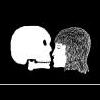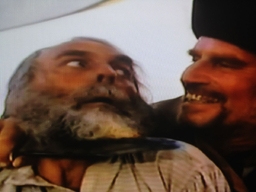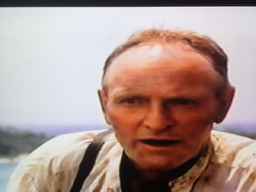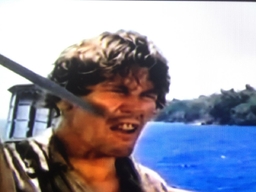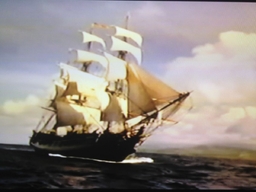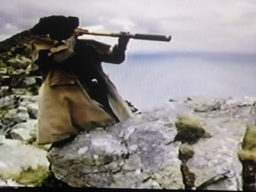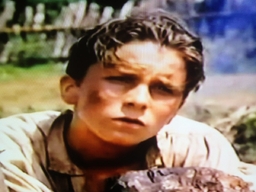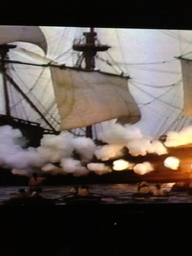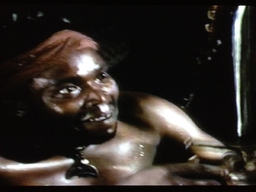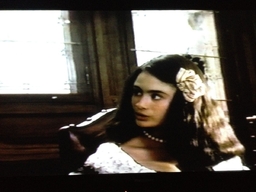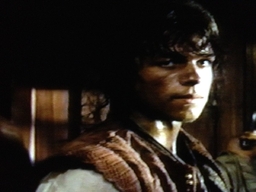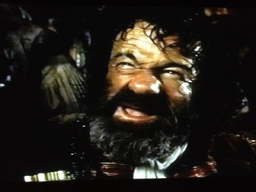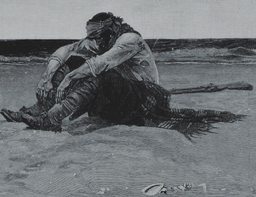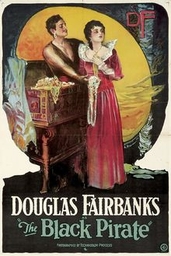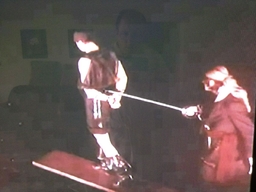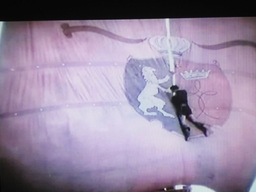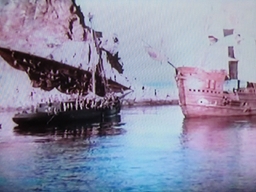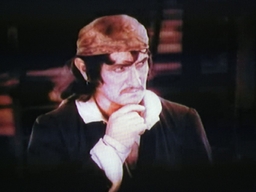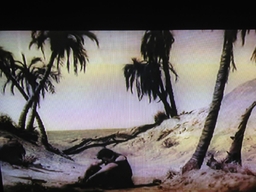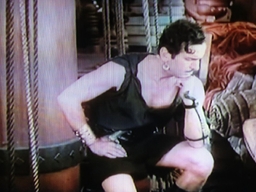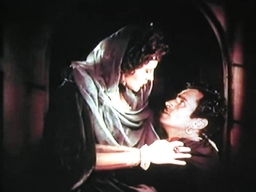-
Posts
652 -
Joined
-
Last visited
Content Type
Profiles
Forums
Events
Gallery
Everything posted by Daniel
-
From the album: Treasure Island (1990)
-
From the album: Treasure Island (1990)
-
From the album: Treasure Island (1990)
-
From the album: Treasure Island (1990)
-
From the album: Treasure Island (1990)
-
From the album: Treasure Island (1990)
-
From the album: Treasure Island (1990)
-
From the album: Treasure Island (1990)
-
In his book Never Cry Wolf,Farley Mowat claimed to have taken this to an extreme. He imitated the wolves he was watching by sleeping in five-to-ten minute increments, at which time he got up, turned around, and went to sleep again. He said that this was "infinitely more refreshing than the unconscious coma of seven to eight hours' duration which represents the human answer to the need for rest." Bear in mind, though, that it remains controversial how much of Mowat's book was fictional and how much true.
-
Chardin painted two self-portraits showing himself with glasses - one with sides, and one without! Chardin, Self-Portrait, 1771. Chardin, Self-Portrait, 1775.
-
Coastie's thread on the Astrid started me thinking about how ships were salvaged back in GAoP. Like many landlubbers, I tend to think of a "lost" ship as sitting on the bottom of the sea without a trace remaining, forgetting that ships, like the Astrid, can be sitting on the rocks with not only their masts but substantial parts of their hulls above water. Such a ship might not be out of reach of 18th century recovery technology. We hear frequently of wrecker-pirates, who swarm out onto a wreck and strip her, or even lure a ship onto the rocks with false lights; how did they go about getting the loot? The one contemporary source I know of about 18th century salvage is Johnson's passage about the 1715 Spanish plate fleet. So, they had "diving engines." What kind of engines might those be? Was this work for slaves, or free men? What could be salvaged besides coin? Are these wrecks partly showing above water, or completely submerged? Etc.
-
Looking at that last article, it sounds to me like the reporter didn't understand that "salvage" could also mean "turn over to the insurer for scrap value" as well as "sail again." Thanks for keeping us posted!
-
PIRATES (1986) Directed by Roman Polanski Featuring: Walter Matthau, Cris Campion, Damien Thomas, Charlotte Lewis, Olu Jacobs, Ferdy Mayne, David Kelly, Richard Pearson, Daniel’s rating: 2 out of 5. Synopsis: One-legged Captain Red and his crewmate Jean-Baptiste begin the movie lost on a raft at sea. They sight the Spanish galleon Neptune and manage to climb aboard, where Captain Red’s stupidity immediately gets them chained in the brig. While imprisoned, Red learns that the Neptune carries an Aztec throne of solid gold. Plotting to seize the treasure, he leads a mutiny, which fails, and he is sentenced to hang along with Jean-Baptiste, but he still has more tricks up his sleeve. Evaluation: When I first watched Pirates about 12 years ago, I loathed it. And having revisited now . . . well, I loathe it less this time, probably because my expectations were lowered to zero, but I still don’t like it. The main reason is that I don’t think Polanski ever figured out what kind of movie he wanted Pirates to be – an Indiana Jones-type picaresque adventure, or a black comedy like Brazil. He then tried both and accomplished neither. The movie is already off course in the opening scene, in which Polanski proves that he doesn’t understand what makes pirates so powerfully magnetic: their appeal to our inborn tribalism. We humans evolved as tiny groups of hunter-gatherers, relying for our lives every second of the day on our fellows inside the tribal circle, and permanently at war with every other human being beyond the limit of that circle. Pirate crews were the last gasp of that way of life. As Bartholomew Roberts’ articles say, he who cheats the company to the value of a dollar is marooned – only people outside the company are fair game. Captain Red openly betrays this ethic in the first five minutes of the film, robbing his crewmate Jean-Baptiste of the tiny fish he caught, then trying – twice – to kill and eat him. OK, so Red’s not much of a pirate when he’s hungry and dehydrated, but what about in happier times? Well, no, he’s not any better with a full stomach and refurbished peg leg. Where Long John Silver is smart, and only fails because he has to rely on his foolish fellow pirates, Red is usually stupid, with intermittent flashes of low cunning, and his fellow pirates are undone by relying on him. When his stolen ship is stolen back from him, he tries to recapture it by leading a flotilla of boats right into the galleon’s broadside, with predictably disastrous results. His plan to capture the Aztec throne at Maracaibo goes awry, twice, through his own bungling, with his crewmates bailing him out each time. Still more frustrating is that Red’s crewmate and co-star, Jean-Baptiste, never comes into his own. At the beginning of the film, he accepts all of Red’s abuse without a murmur. Red can’t even be bothered to say his name, calling him Froggy throughout the film. Then Jean-Baptiste falls in love with Dolores, the beautiful niece of the governor of Maracaibo – and this changes him not at all. At the end of the movie, he is still doing everything Red tells him to, even when this could have cost him the woman he loves. This pattern is repeated in Red’s ally Boomako. Floundering from its weak characters, Pirates is then sunk by one more shot: the horrible cinematography. The focus is often dull, the light usually weak and browning out the images, or else so strong that it washes everything out. The best way to say it is that when I watched The Black Pirate, I saw an image I wanted for the review every five minutes, and ultimately I had far more images than I could use. I never once saw an image I wanted while watching Polanski’s Pirates. This is supposed to be the Caribbean and was actually shot in the Mediterranean; is it really too much to ask that it look beautiful? This is, of course, more than enough to ruin the movie, but it has some virtues that I didn’t notice the first time around. John Brownjohn wrote some quite good lines for Captain Red, making him sound very salty but still intelligible, with phrases like “Do you see the course I lay?” for “Do you see what I mean?” I have always loved Walter Matthau, and he manages to give his repulsive character a little superficial charm. And I had forgotten how heart-achingly beautiful Charlotte Lewis was, although it’s unfortunate that her character, Dolores, is given almost no chance to develop. Damien Thomas makes quite a pleasingly nasty villain as Don Alfonso, his performance even more remarkable for being a last-minute replacement after Timothy Dalton walked out. Ferdy Mayne’s brief but shining turn as the murdered Captain Linares seems almost to channel Christopher Lee. A lively score by Philippe Sarde gives the movie some much-needed spunk. A number of the period details are good too, but more about that later. Two scenes are key to understanding Pirates: one when the Neptune’s mutineers jump meekly back to work at Don Alfonso’s command, and the other when Red’s old pirate crew stands gazing dumbly at him until they’re sure he’s really back. Incompetent and untrustworthy as Red is, nobody has any initiative without him; ordinary people are cowed and spiritless until he takes charge. This is supposed to explain, and even justify, the way his own associates continue to treat him well even after he abuses their trust. It’s not surprising that the man who directed this movie is a convicted pedophile. Piratical tropes and comments Pirates is set in 1660, give or take a year, after the signing of the Treaty of the Pyrenees in 1659 but before the death of Cardinal Mazarin in 1661. The props are mostly appropriate for that period, with broad-brimmed hats for Captain Red and the aristocratic Spaniards; the Spanish dons are also shown continuing to be attached to old-fashioned rapiers while the rest of Europe was moving on. The Neptune is a pretty amazing prop. She’s called a “galleon,” but she looks more like an East Indiaman to me, with a double row of cannon and that high, sloping sterncastle that you see on the Batavia. The beakhead, though, looks like something from the late 17th or early 18th century: short and upswept instead of long and low like the galleons and early Indiamen had. But for all that, she’s huge, she creaks, she has a magnificent set of stern lanterns, and she’s beautiful. The low headroom of period ships is accurately shown: one mutineer puts it to good use by repeatedly slamming his opponent’s head into the ceiling. The Neptune has rats, and the sailors are correctly shown holystoning the deck. The Neptune is still docked in Genoa today, a graceful monument to a bad movie. Hardly any cutlasses appear in the movie; the Spanish use cup-hilt rapiers, while Matthau uses a shell-guard rapier; I never saw him actually use the cutlass that he's shown holding in the movie poster. But the movie also showcases two real pirate weapons that rarely get any play on screen: the boarding axe, which Boomako uses with deadly effect in the mutiny, and grenades, which Red’s pirates throw into the gunports and hatches while assaulting the Neptune. The Jolly Roger here is the famous Rackham version – a skull above crossed swords – later used in both Cutthroat Island and POTC. It is, of course, forty years too early for that or any black Jolly Roger to be used. Red apparently carries a full-sized Roger in his pocket, which he pulls out and gives to Jean-Baptiste when they capture the Neptune. Much like Stevenson in Treasure Island, Polanski doesn’t know what the flag is used for; his pirates fly it even when not chasing a prize. A ghastly period-correct touch is used here: Spain's main method of capital punishment in the colonies was the garrote, not the gallows, from at least the time when the Inca emperor Atahualpa was executed.. We are shown the aftermath of a mass garroting in gruesome close-up, which utterly destroys any attempt that Pirates was making at comedy. Much as in the 1999 Treasure Island, we are treated to the painful side of period medicine. Captain Linares is given an enema with a gigantic syringe that looks like something right out of Mission’s kit. Captain Red is a virtual walking pirate lexicon, using “alongside” for “beside,” “my hearties,” and so on. He’s also the only movie pirate I’ve ever heard mention “the Brethren of the Coast,” although no other captains of the Brethren play any role in the movie at all. The major pirate accoutrements here are Red’s peg leg and Jean-Baptiste’s earring. The peg leg proves a constant bother to Red, as he’s always getting it stuck and at one point has to pay a carpenter to cut him a new one. The games pirates played with prisoners included forcing them to ride each other around the deck. Pirates takes this one step further, as the pirates force their captives to play “Dead Man’s Nag,” where Don Alfonso and his men are forced to sword fight each other to the death while riding on the shoulders of other captives. Alfonso does as bidden and stabs his fellow hidalgo, proving that when his life’s on the line, he'll kill his friends just as readily as Red will. Walter Matthau as Captain Red; there's less to him than meets the eye. Cris Campion as Jean-Baptiste; it would have been better if he'd turned this face toward Red more often. Damien Thomas as Don Alfonso. "I'm a Spanish don; what do you mean I'm not the good guy?" Charlotte Lewis as Dolores, trying to mitigate Don Alfonso's nastiness. Olu Jacobs as Boomako: overworked and underappreciated. Open boats versus galleon's broadside.. This does not end well.
- 34 replies
-
- movies
- pirate art
-
(and 3 more)
Tagged with:
-
From the album: Pirates (1986)
-
From the album: Pirates (1986)
-
From the album: Pirates (1986)
-
From the album: Pirates (1986)
-
From the album: Pirates (1986)
-
From the album: Pirates (1986)
-
What happens if Astrid can't be refloated? Will she simply be left there indefinitely? Doesn't she pose a navigation hazard?
-
Cool. That explains a lot, like why English sailors are often portrayed clean shaven in period sources. Although some pictures show sailors so young they might not need to shave yet. A crown, I think, was 5 shillings, so if each sailor paid half a crown, that would be two and a half shillings, or 30 pence - the value of five shaves on land. Not bad for a voyage that might last a year or more!
-
There are many good threads like this about shaving, but I don't see anything about shaving cream. Was it used in period, and if so, where did they get it? Wikipedia's article on shaving cream says that hard shaving soap was used before 20th century shaving creams, but it only dates that back to the beginning of the 19th century. The last mention of that was shaving cream in ancient Sumer, 3,000 B.C., which was made of wood alkali and animal fat. Was shaving soap already around in GAoP? And how do you use it? Mix it with water in a shaving basin and then brush on? Other threads seem to suggest that most men didn't shave themselves, but went to a barber once or twice a week. That's sixpence a pop, according to Elena's source from Foot Guards, so a seaman who shaved once or twice a week would end up spending from 26 to 52 shillings a year on shaving. An ordinary seaman only earns 228 shillings a year, so that's somewhere between 11 and 22 percent of your annual salary going to shaving. This makes me wonder if shaving might be something of a luxury of the middle class in our period.
-
THE BLACK PIRATE (1926) Directed by Albert Parker Featuring: Douglas Fairbanks, Billie Dove, Sam de Grasse, Donald Crisp, Anders Randolf, Charles Belcher, Tempe Pigott, Charles Stevens, John Wallace, Fred Becker, E.J. Ratcliffe. Daniel’s rating: 3½ out of 5. Synopsis: A Pirate Crew robs a merchant ship and blows it to Kingdom Come, together with all the passengers and crew. An old man and his son are the only survivors . . . whoops, make that the son is the only survivor. The newly orphaned son (Fairbanks) swears revenge against the Pirate Crew, which just happens to be burying the treasure on the same island that he washed up on. Calling himself the Black Pirate, he joins the marooners, offering to prove himself by single-handedly capturing the next ship they meet. He makes good on this boast, but the prize ship carries a Princess who is just too pretty for the Black Pirate to allow her to be blasted to bits. Evaluation: The Black Pirate is a lot like Pirates of the Caribbean. Both are totally absurd, and both are so much fun I don't care how absurd they are. It's easy enough to say why The Black Pirate is absurd. To start with, nobody EVER speaks to anybody else by name. In fact, only one character even has a name, which we learn when he signs a ransom note. (Read that again: he signs a ransom note). Then, even though every merchant ship in the movie is carrying either a Princess or a Duke, none of them bothers posting a full watch topside, sailing in convoy, or mounting enough cannon to fight off a not-particularly-well-armed pirate ship. Then, there are the battle tactics: once you’ve dismasted the enemy ship (with a single shot, no less!) and have it at your mercy, the next step is to scuttle your own vessel and mount a boarding attack by swimming. Then, all the governors’ soldiers wear skimpy black leather outfits that many a gay biker would pay good money for. Then, the pirates tell time aboard their ship with a sundial, which can’t possibly work unless the sea is perfectly calm and the ship never turns. Then, a pirate standing four feet behind Fairbanks fails to notice that Fairbanks’ hands are no longer tied. Then . . . but you get the idea. It’s harder to say why The Black Pirate is so much fun anyway. I think it’s because the film is so energetic. The whole movie only lasts about 95 minutes; the synopsis above covers only the first forty minutes. Everything comes at you at such a breakneck pace that you really don’t have time while you’re watching to kvetch about how implausible the thing that just happened was, because the next implausible thing is already under way. A lot of this energy comes from Douglas Fairbanks, who handles all his action sequences with such verve and gusto that he wins the loyalty of both the pirates and the audience effortlessly, although he may not even be a good guy at heart. The other secret to The Black Pirate’s appeal is its visual flair. Some of the images seem inspired by Howard Pyle, especially Fairbanks marooned on the island after his father dies. The early Technicolor looks strange, but the flamboyant costumes and theatrical, silent acting are hypnotic. The movie is also very funny at times, especially when we learn that counting the paces on a treasure map is very tricky when you have a peg leg, and that sleepy pirates have interesting ways of keeping themselves awake. So far, so POTCesque, but the cruel, flinty core of Parker’s The Black Pirate is absent from Johhny Depp’s and Gore Verbinski’s film. All the best pirate films are ambivalent toward piracy, never quite certain whether pirates are good guys or bad. This ambivalence appears in The Black Pirate too, as the hero commits some acts of brazen piracy to prove himself and some of the pirates protect him and the Princess. But overall, the movie leans decisively toward making pirates villains. The opening scenes show the freebooters dispassionately stripping rings and wealth from the men they’ve just murdered, and twice they sink ships with the intent to kill every man and woman aboard. In a modern movie, a hero would probably have swung in to rescue the doomed victims of the pirates at the last second, but that doesn’t happen here; scores of people are drowned basically to make the point that these pirates are really evil. In the most unsettling scene in the movie, the Pirate Lieutenant is sitting by the prisoners of the latest capture, when he suddenly sticks his sword into one of them, for no apparent reason but sheer boredom, and then looks at his red-stained sword in a vaguely irritated way, as if he hadn’t considered the inconvenience of cleaning his blade until now. The utter casualness of the murder is emphasized by not showing the dead man on screen. To the viewer’s eyes, just as to the murderer’s conscience, the victim doesn’t even exist. In sum, The Black Pirate is a fantasy, although a darker-shaded fantasy than Pirates of the Caribbean. Like its great-granddaughter, The Black Pirate has nothing to do with actual historical piracy, and everything to do with the fancies that pirate art and literature put into our heads: sails billowing, trade winds in your hair, flashing blades, booming flintlocks, danger, action, excitement and romance, and all the other images that run through the head of a boy dozing on the schoolbus headed for home, or a girl at the end of a too-long study session in the library, or, for aught I know, a young foretopman at the masthead in the last few minutes before eight bells. Piratical tropes and comments: Ladies and gentlemen, we have sighted bucket boots in 1926! I don’t know if this is their earliest appearance, but it is surely the most ridiculous. We first see them when Fairbanks has washed up on the island with his father, which means Fairbanks must have swum more than a mile while wearing them. Like POTC, The Black Pirate doesn’t seem committed to any particular time period. Elizabethan props are most common, as the merchant ships are genuine galleons with those enormous foc’sles and sterncastles that you see in 16th-century illustrations. The Black Pirate also wears an Elizabethan cup-hilt rapier at one point, and both he and the Pirate Leader fight in Elizabethan style with rapier and main gauche. But the film also features walking the plank, which occurred in the 19th century when it happened at all, and the pistols are small true flintlocks with sharply curved butts, not Elizabethan wheel-locks and snaphaunces. Add to that the Georgian-era cocked hats, and Douglas Fairbanks’ short shorts, and sleeveless tunic, and you have a medley of anachronism. Maybe the most unique trope that The Black Pirate established was using a knife to slide down the face of a sail, tearing the sail as you go. In the context of the movie, it makes some sense; Fairbanks does this very dangerous stunt not because he’s in a hurry to get down, but because he wants to disable the ship quickly. I can’t say for sure that this is the first appearance of the trope in fiction, but it is surely the one that made it famous. The Black Pirate is unusual in that the pirates’ vessel isn’t a full-rigged three masted ship. It’s a single-masted craft with low freeboard and a giant black lateen sail, looking something like a tartan or a felucca. It’s an intimidating, evil-looking vessel, very well chosen, and it makes sense that it would be able to overtake the wallowing galleons. It does not have any visible gunports, though; the cannons are all tiny things on small carriages, and at one point a loose cannon is shown on deck while the pirates feast, which would be unbelievably negligent. The Jolly Roger, in its incarnation as a skull with crossed bones below it, appears here. Everywhere. It’s in a flag flying from the rigging (not from a flagstaff or the masthead, curiously). It’s also on the pirate leader’s hat. Several of the pirates even have it tattooed on their chests, thus giving us another famous trope, the tattooed pirate. The pirate leader uses another well-known trope, the knife clutched in his teeth. He has no reason at all to be doing this; he’s not fighting or climbing the rigging, he’s just counting the loot, and acts like “I’ll just bite my knife today, because I’m that cool.” There are no parrots in sight, but there is a monkey, a cute little thing captured from the same vessel that the Black Pirate rode on. The pirates draw lots for the monkey, one wins, and the animal then disappears from the movie, never to be heard from again. Hopefully it did not end up like the monkeys that Bartholomew Sharp’s men found and ate in 1681. The hidden-treasure trove is here, of course, although the pirates don’t bury the loot in a hole, instead carrying it into a hidden cave with a flooded entrance, another device that POTC would copy. Incidentally, the treasure chest is quite small, accurately showing that you could carry a fortune in gold in a very small space. A pirate here is shown sporting a peg leg, which doesn’t fit very well, but eyepatches are absent. One pirate is missing an arm, but he just ties his sleeve over his stump, with no hook. The piratical language used includes “Dead men tell no tales,” as well as “avast,” and “yo ho,” which are both incorrectly used as a vague way to say “hey!” But the usual pirate forms of address – “my hearties, matey, mates, bucko” – are absent. Instead the pirates call each other “bullies.” “Bully” was an often used word at sea; much like “bucko,” it was an unfriendly word for an overbearing, aggressive officer (i.e. “Bully Bob Waterman,” captain of the Challenge), but could also be a term of respect and even endearment. Fairbanks wears earrings in both ears. This, combined with his short shorts, revealing tunic, mustache and armbands, makes him look very much a gay leather idol, or at least my conception of one. I assume this wasn't intentional, since Fairbanks does woo and win Billie Dove, but the effect is there. Back in the bad old days, when most gays had to live in the closet, I’m told they identified each other as “Friends of Dorothy,” a reference to Judy Garland in The Wizard of Oz, so they could talk about each other without the intolerant community catching on. Having seen this movie, I really don’t understand why they didn’t call each other “Friends of Doug.” Fairbanks, the Black-Clad Pirate. Pirates are irresistible. The famous sail-tearing scene: not as silly as it looks. Pirate to port, galleon to starboard. The Pirate Lieutenant has second thoughts about the Black Pirate. Pssst! His hands aren't tied! Fairbanks marooned. Howard Pyle's "Marooned." Coincidence?
- 34 replies
-
- movies
- pirate art
-
(and 3 more)
Tagged with:
-


